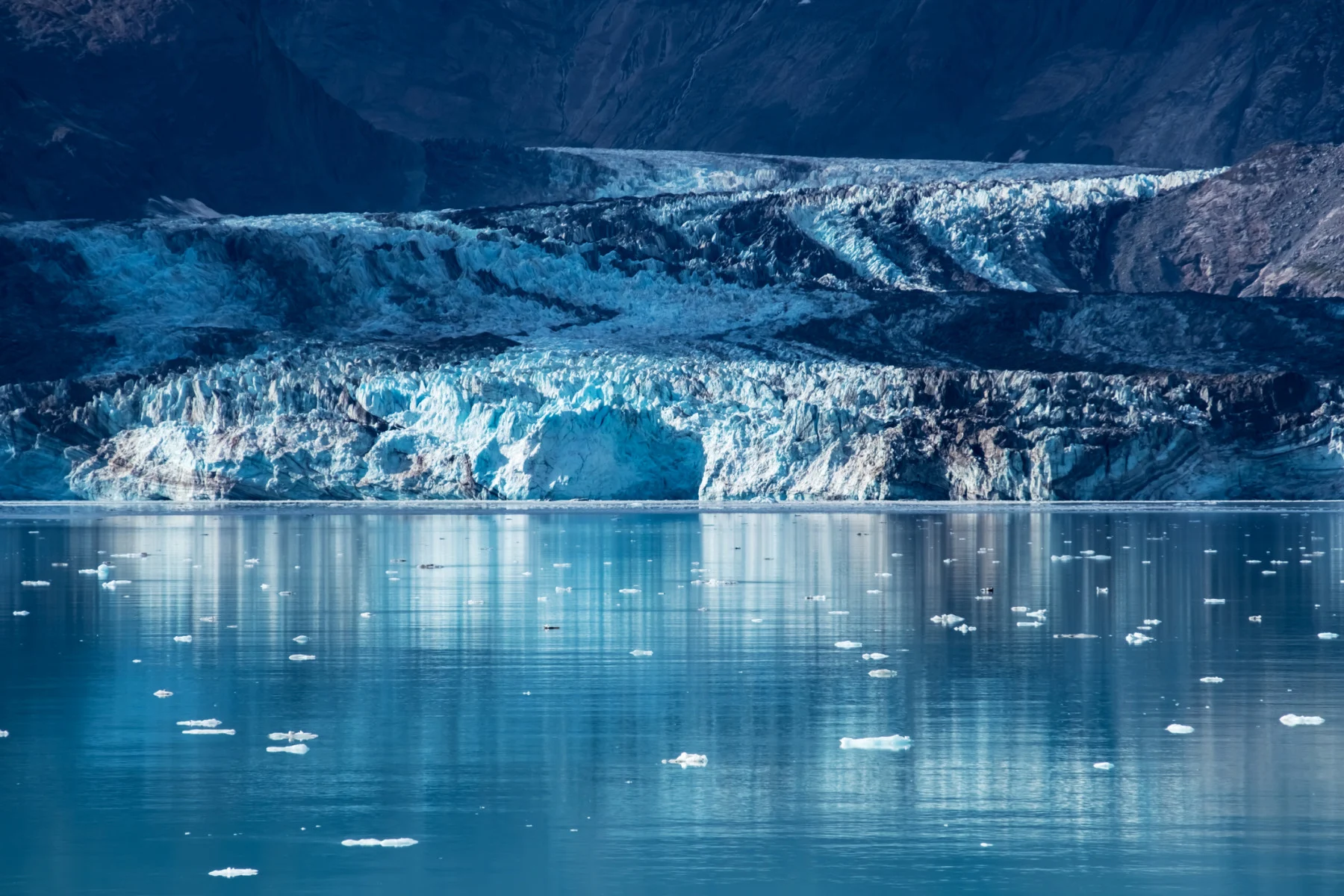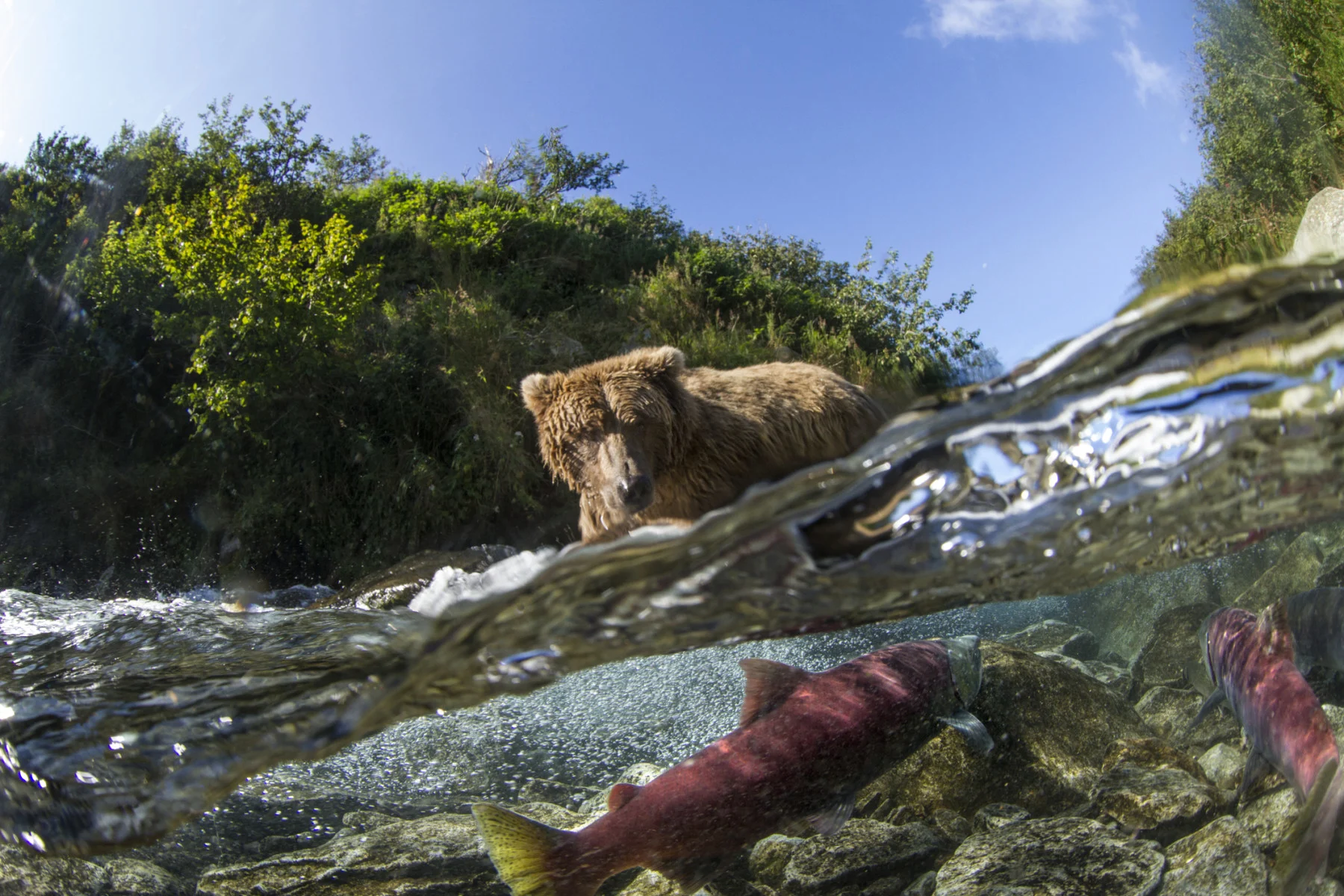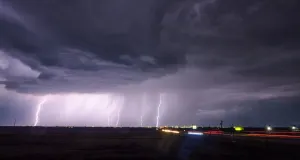
Melting glaciers could create massive salmon habitat near B.C., Alaska
Over 300 glaciers in the Pacific Northwest are forecast to create new streams that could be colonized by salmon.
The region of southeastern Alaska, British Columbia, and the Yukon are forecast to see significant gains in salmon habitat, according to a study published in Nature Communications.
The study found that under a scenario where greenhouse gas emissions peak in 2050 and then decline, a new habitat stretching roughly 6,146 km long by 2100 could be created for migratory Pacific salmon, which is roughly the length of the Mississippi River.
Three hundred and fifteen glaciers in the Pacific Mountain ranges of western North America could create streams that the salmon could thrive in. The new habitat includes low-gradient streams originally flowing from glaciers with less than 10 per cent incline that connects to oceans.

A brown bear eyeing salmon underwater in Katmai National Park, Alaska. (Paul Souders/ Stone/ Getty Images)
“We predict that most of the emerging salmon habitat will occur in Alaska and the transboundary region, at the British Columbia—Alaska border, where large coastal glaciers still exist. The Gulf of Alaska sub-region is predicted to see the most gains, a 27 per cent increase in salmon-accessible habitat by 2100,” Dr. Kara Pitman, study lead author and spatial analyst at Simon Fraser University, stated in a press release.
Pacific salmon are cold-water fish that live in waters that are around 15°C. Oxygen levels at this temperature are optimal but decrease as temperatures climb, which makes it harder for the fish to uptake the amount of oxygen they need. This causes them to exert abnormally high levels of energy as they seek out cooler waters, which sometimes is too far of a distance for them to survive.
Decades of previous research indicate that salmon can thrive in habitats created by glacial retreat, which is what occurred when a new stream formed in Stonefly Creek, Alaska in the late 1970s.
“Colonization by salmon can occur relatively quickly after glacial retreat creates favourable spawning habitat in the new stream. For example, Stonefly Creek was colonized within 10 years by pink salmon that grew rapidly to more than 5,000 spawners. Other species also colonized including Coho and Sockeye salmon, especially where a lake is associated with the stream,” stated co-author Professor Alexander Milner from the University of Birmingham.
The researchers have noted that even though retreating glaciers can create new habitats for the salmon, it also presents more opportunities for mining and other activities that can be harmful to aquatic species. Given the complexity of such future scenarios, the study reported that a better understanding of possible future salmon habitats can inform future salmon management and conservation planning.
There are roughly 46,000 glaciers in the Pacific mountain ranges in North America and 80 per cent of this area falls within the range of Pacific salmon. Glaciers in this region are rapidly melting and some of these glaciers are projected to lose up to 80 per cent of their volume by 2100.
“With hundreds to thousands of kilometres of new habitat being created from glacier retreat, there is a potential to produce hundreds of thousands to millions of additional juvenile salmon, depending on species,” the study stated.
The potential of new salmon habitat is largely overshadowed by the other impacts warming global temperatures and retreating glaciers will have. This includes historic flooding, fatal heat waves, glacial outburst floods, landslides, river piracy, and changes to watersheds.
While there may be new opportunities for Pacific salmon in recently created habitats, their future population numbers will largely depend on other climate-induced stresses such as ocean heat waves, ocean acidification, sea level rise, flooding, droughts, and rising atmospheric temperatures.
Thumbnail credit: BriBar/ E+/ Getty Images











